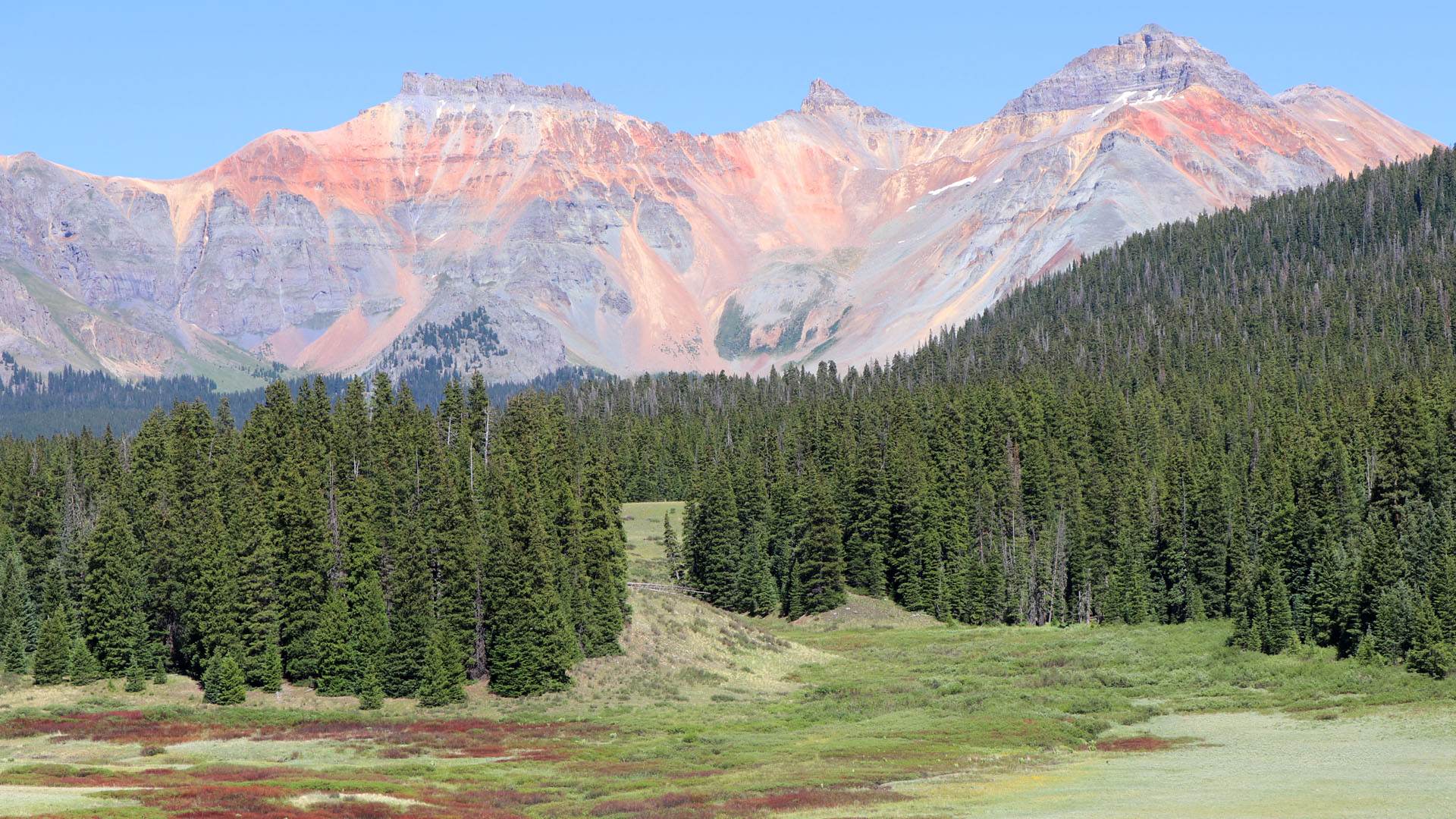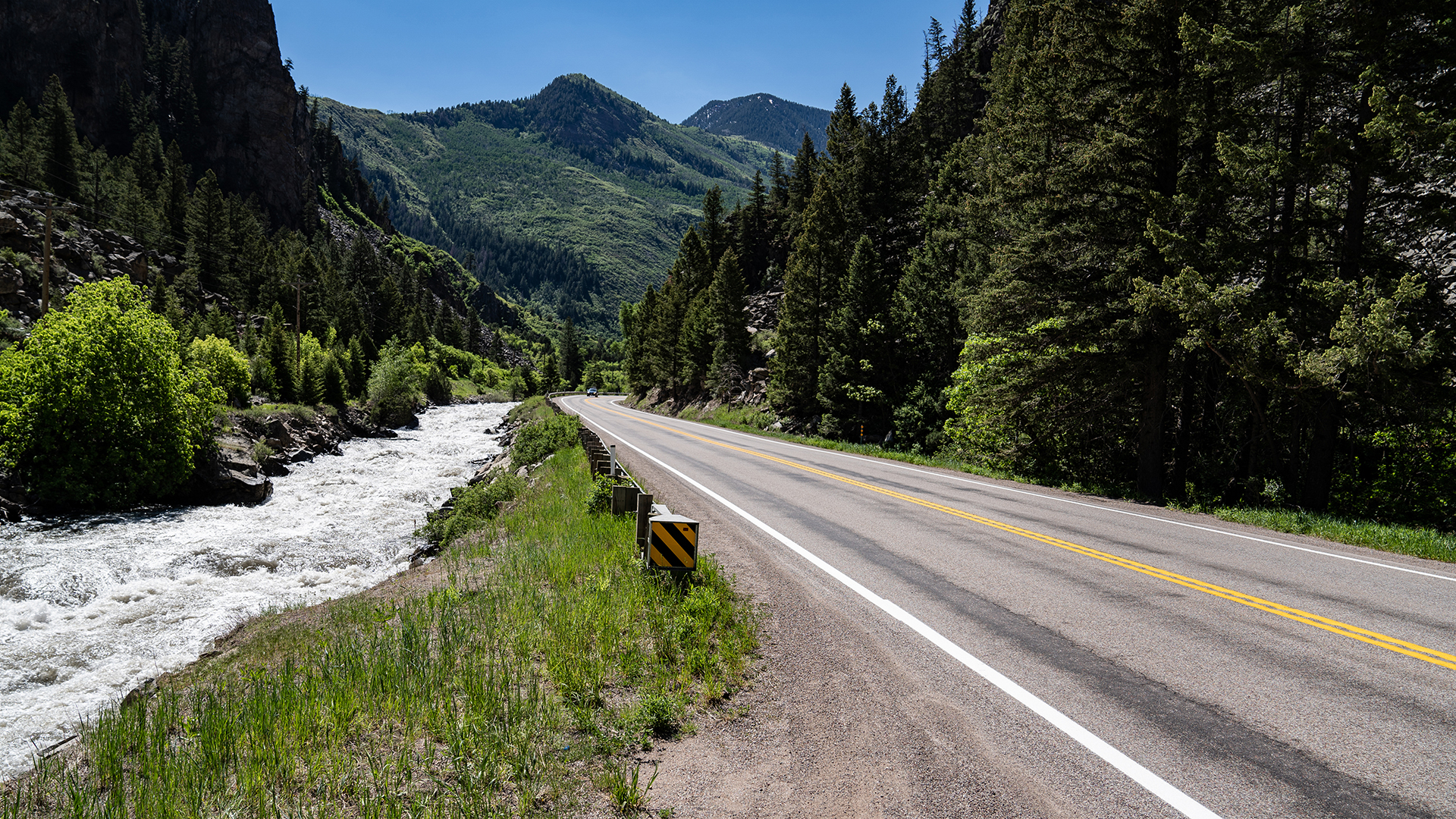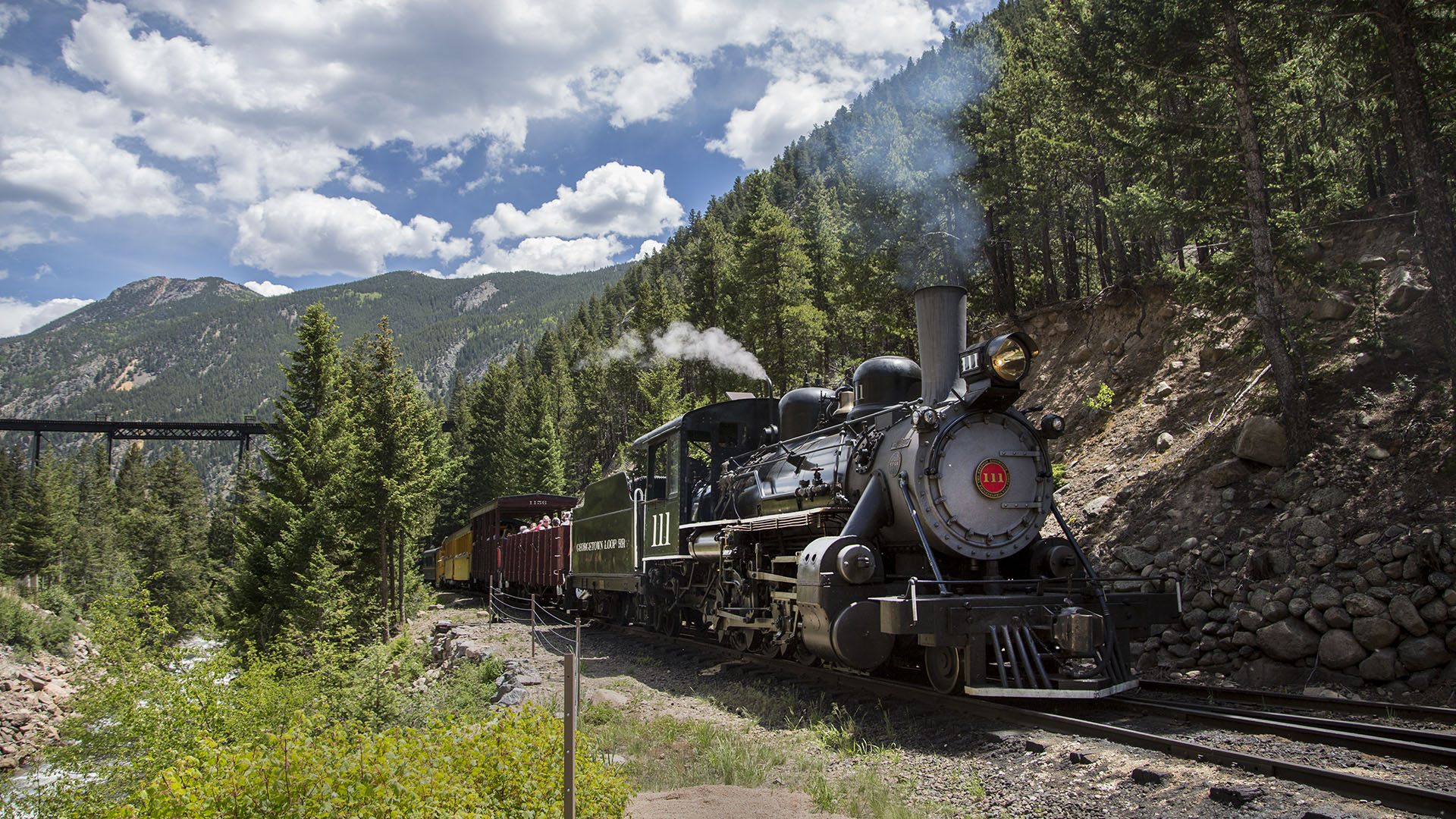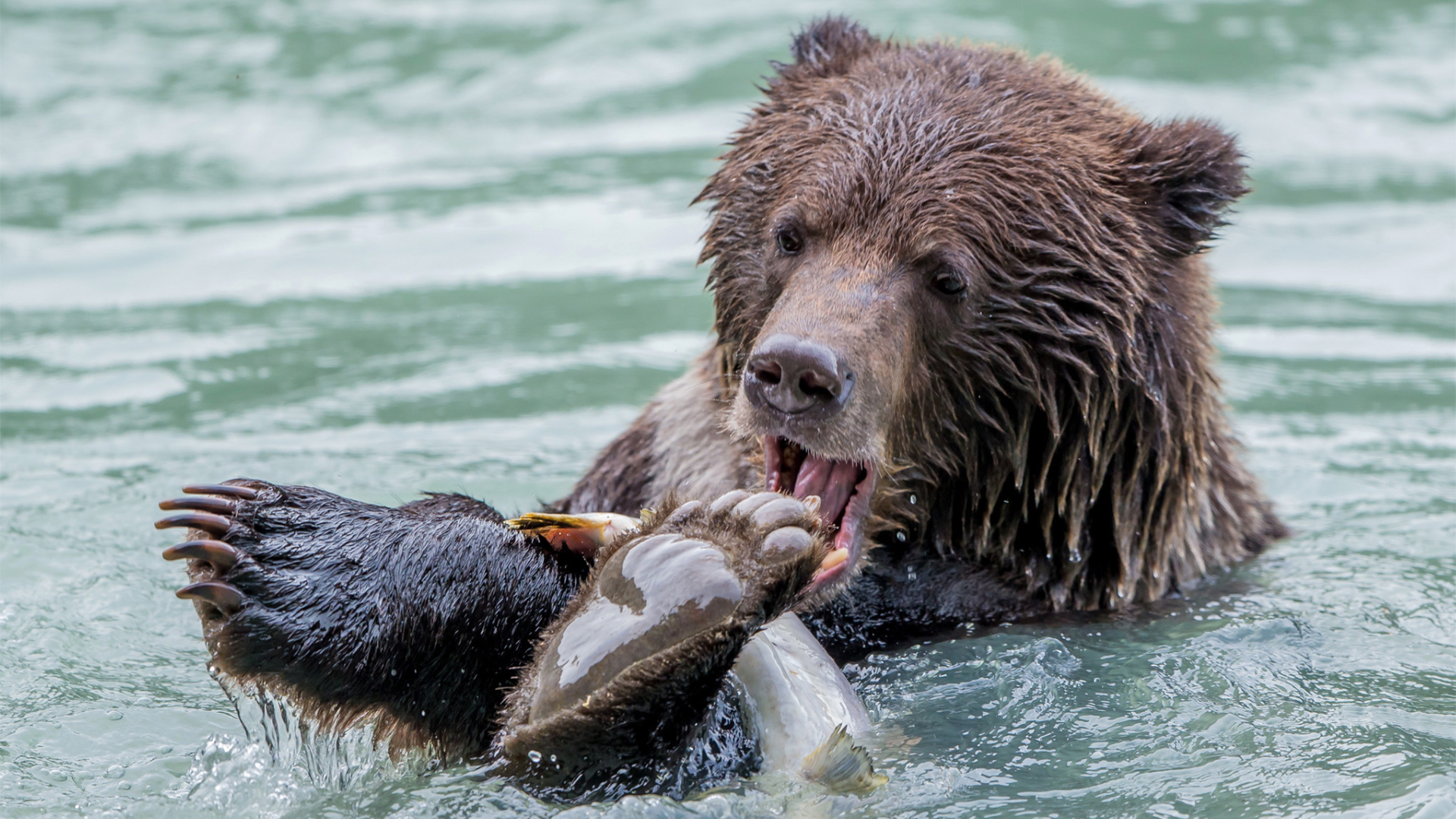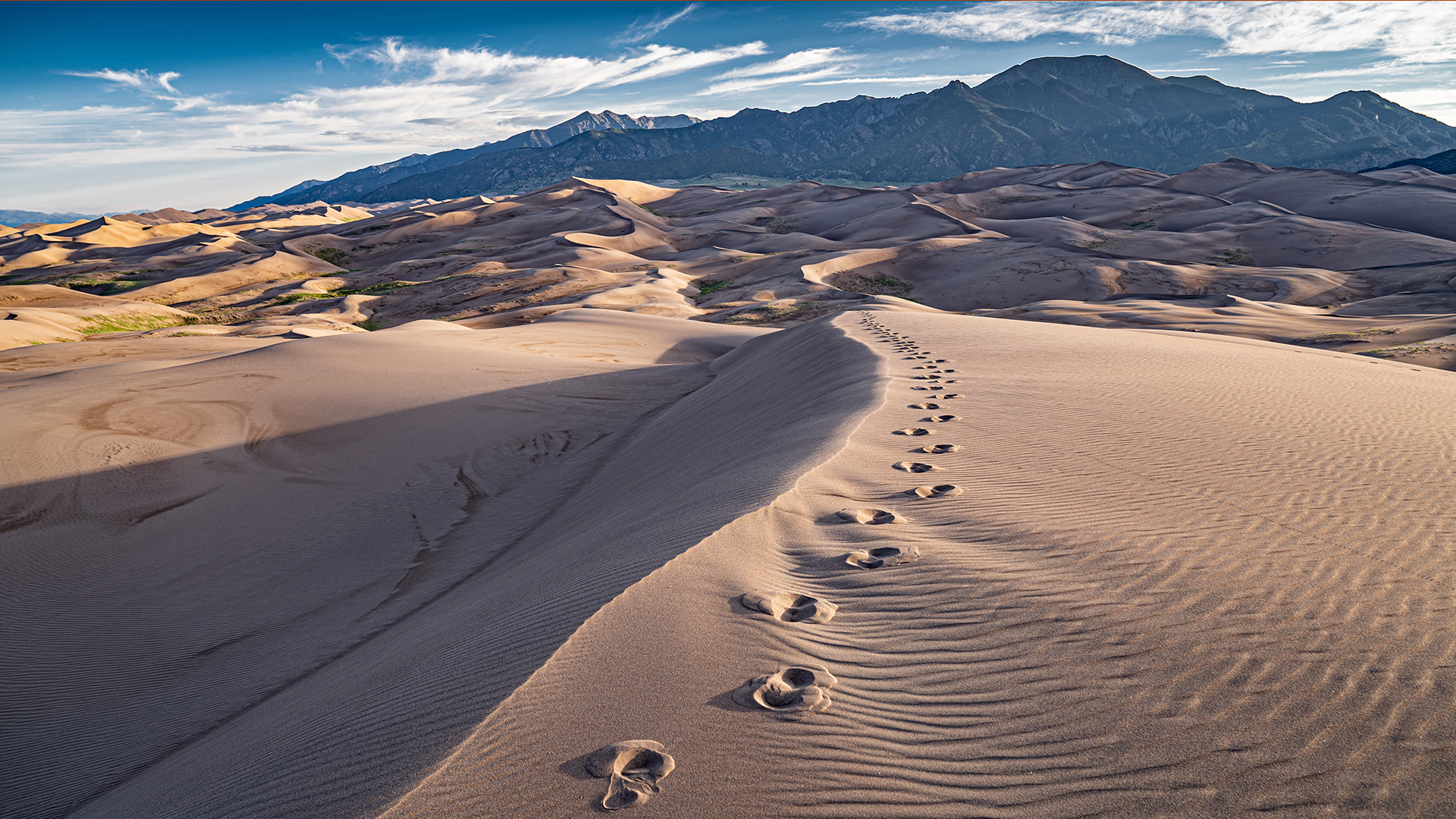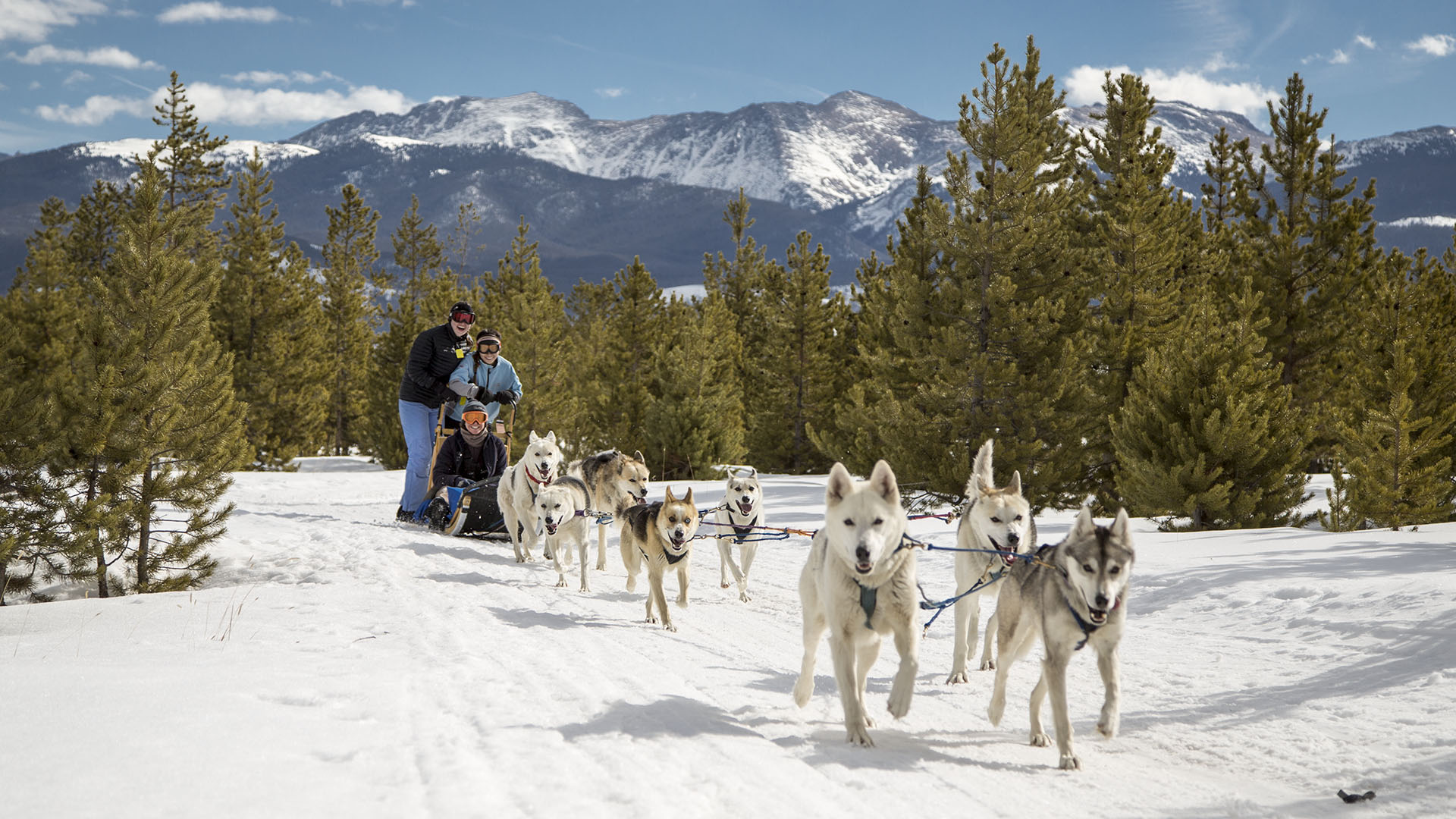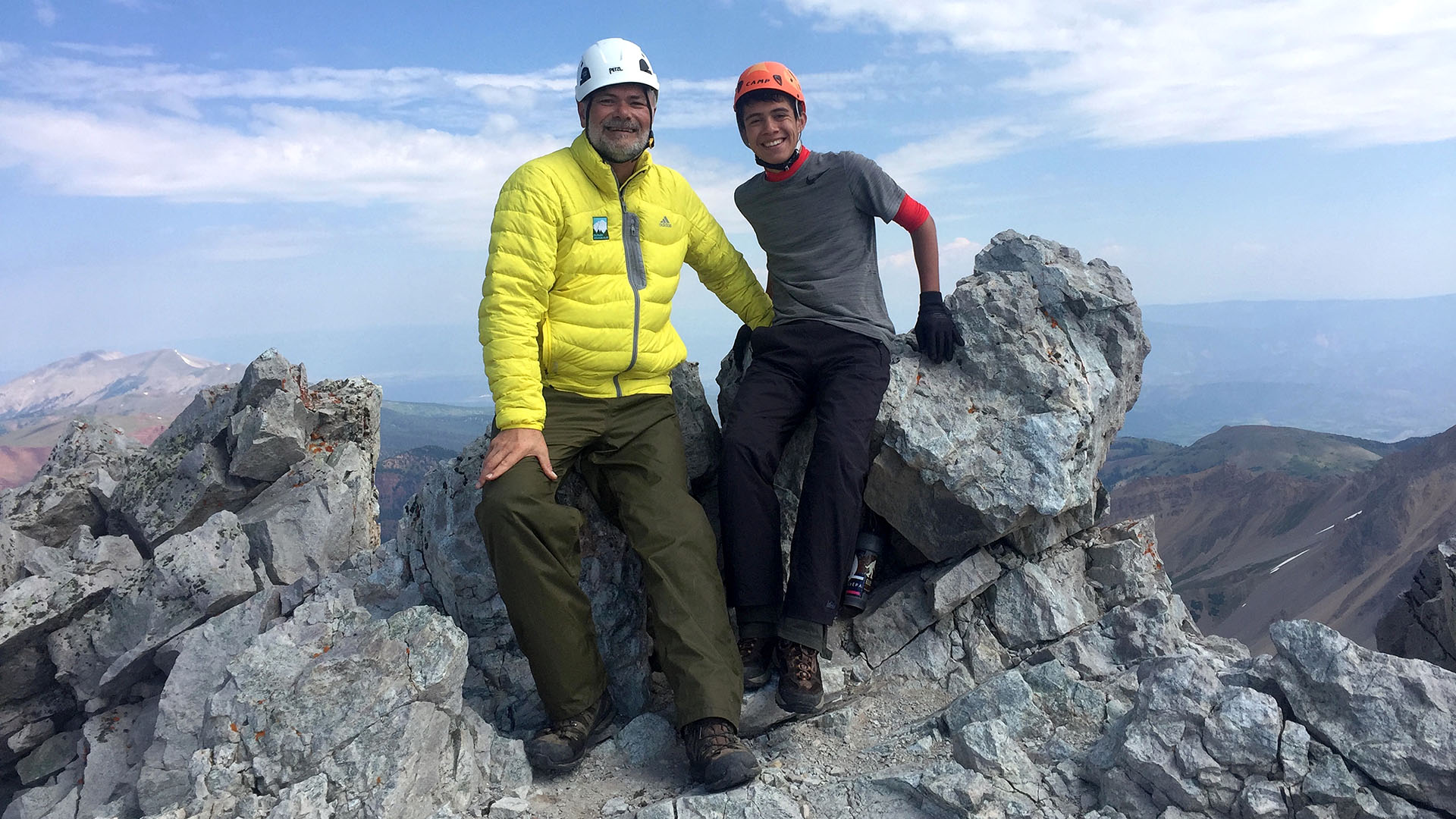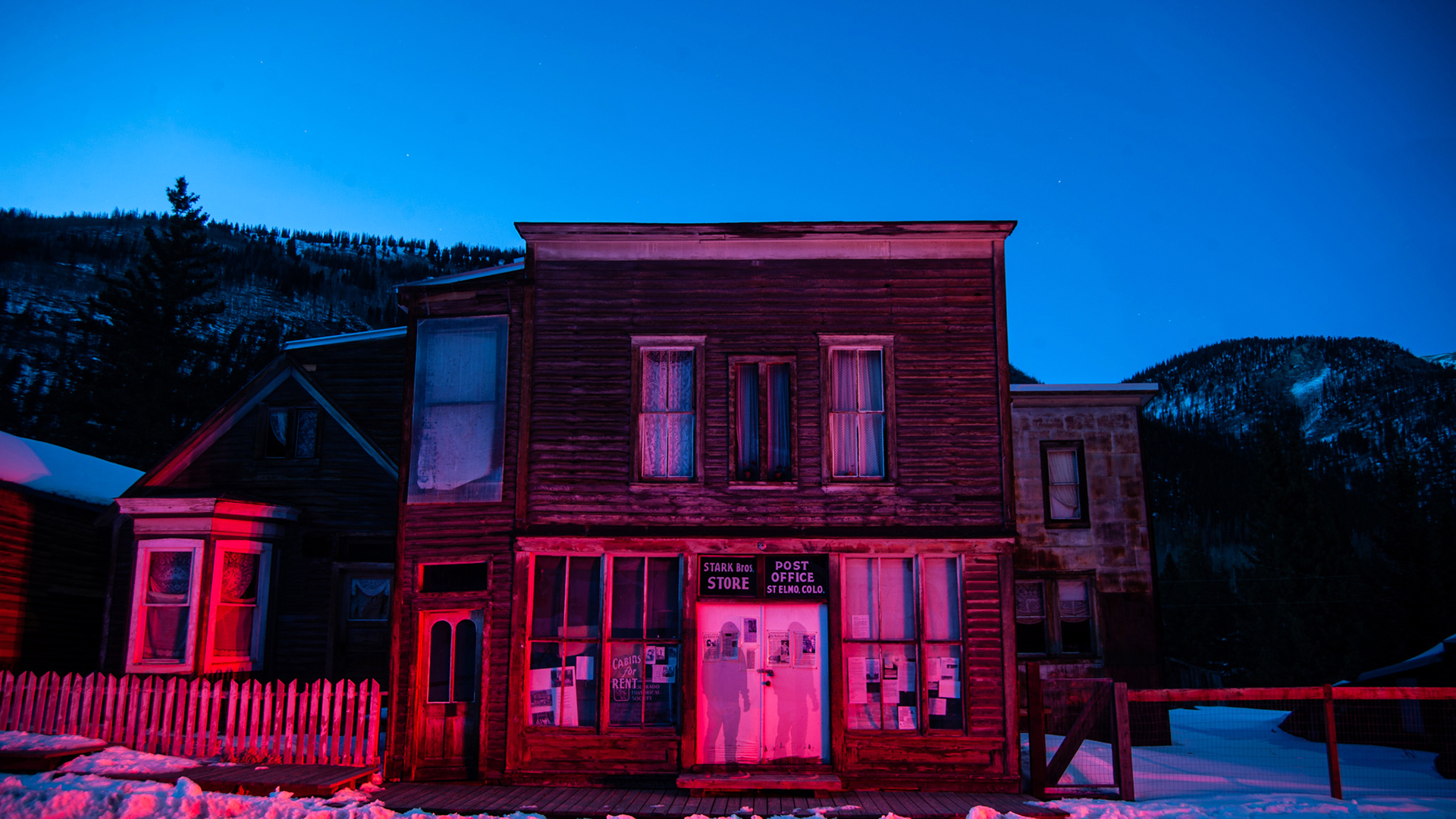Fourteener Fever

After an 11-year father-son quest, Daniel Otteman summits Mount Wilson, his 58th and final fourteener. © Scott Otteman
Story by Connie Gelb Otteman; photos by Scott Otteman and Shawn Otteman
Connie is a freelance writer, photographer and English teacher based in Washington, D.C.
For the past 25 years, Connie Gelb Otteman’s family has crisscrossed Colorado's high country from the Front Range to the San Juans on a mad mission to climb all 58 14,000-foot peaks.
I was clinging to a boulder just below the summit of my first fourteener, swearing at my new husband. An expert skier, sailor and occasional marathoner, I was eager to help Scott finish climbing all of the 14,000-foot peaks in Colorado – his longtime personal goal. But now, on my honeymoon, I was frozen with a fear of heights. Scott grabbed my waistband and moved me several inches higher. He did this again and again until I crawled my way to the top of Mount Yale.
When I reached the summit of my first fourteener, Scott pulled a small bottle of champagne from his pack. He popped the cork, and we toasted our new life together as we admired the 360-degree view. That was a quarter century ago, when I was brand-new to the mad mission to “bag” all of Colorado’s fourteeners.
Colorado has the highest concentration of fourteeners in the United States, with 58 peaks over 14,000 feet. These peaks are spread out over seven mountain ranges throughout the state.
Scott has been climbing these mountains with his family since he was a boy growing up in Fort Collins, Colorado, in the 1970s. He summited his final fourteener in 1997, a few years after we were married.

Scott, Daniel and Connie Otteman pose for a photo atop Mount Bierstadt. Photo from Otteman Family Archive

Daniel takes a breather before making the final push to summit 14,159-foot El Diente Peak, his 36th fourteener. Photo by Scott Otteman
Capturing the Night Sky
My last shot of the trip also proved to be the most difficult. I wanted to photograph the magnificent night sky with the stars dancing off the ocean below. Capturing the Milky Way can be challenging. You need a solid tripod, a fast wide-angle lens and a remote shutter release. The tripod keeps your camera still and the remote shutter release ensures the camera doesn’t move during the long exposure time. As a rule of thumb, I like to start with a wide-angle focal length of 15-30 mm, an aperture of f/2.8, 3200 ISO and an exposure of about 25 seconds. After a couple of test shots, you can adjust these settings until you get the shot you want.
I knew the conditions would not be ideal, and the weather called for intermittent cloud cover. The shoot could prove difficult, if not impossible, but it was my last night in Charleston, and I couldn’t leave without giving it a try.
I arrived on Folly Beach at night, hoping the stars would emerge. I quickly fired off a few shots, but much to my dismay, the cloud cover was too thick. I spent the next two hours standing knee-deep in the ocean, hovering over my camera and waiting for the stars to make their grand appearance. Just when I thought all hope was lost, I caught a small glimmer of a star. Could this be it? The conditions were challenging, but I couldn’t be happier with the images. This photo had been on my bucket list for a long time.
At the end of the night, I was exhausted but too excited to sleep. I reflected on my journey. I had faced adversity and persevered. I had pushed my own creative and technical abilities and elevated my photography to the next level. More importantly, I had left with some epic memories and an opportunity to continue my quest to take perfect photos.

Daniel and Scott Otteman pose at the summit of Mt. Evans, Daniel’s first fourteener. Photo by Shawn Otteman

Mountain goats peer into the abyss atop North Maroon Peak in the Elk Range. Photo by Shawn Otteman
Road Warriors
Over the next several years, our family crisscrossed Colorado from Uncompahgre Peak in the San Juan Mountains to Longs Peak in the Front Range. Accessing fourteener trailheads can be difficult. Climbers usually drive up a peak as high as possible, as long as they leave at least 3,000 feet of elevation gain needed to qualify as a fourteener climb.
When Scott and his brother were kids, they would race down the mountain to the car to see who could reach the cooler first. “And now Daniel does that with his cousins,” Scott says. “They get to the car and blast the radio and guzzle soda on the tailgate before the slowpokes hobble down the trail.”
The fourteeners are ranked by difficulty from “easy” Class 1 climbs like Handies Peak in the San Juan Range to very difficult Class 4 ascents such as Capitol Peak in the Elk Range. As Scott had planned, he and Daniel tackled the “easy” peaks before attempting difficult ones. During their Class 4 climbs, I would wait anxiously for their text message letting me know that they had made it down safely.

Daniel prepares to climb North Maroon Peak. Photo by Scott Otteman

Scott and Daniel Otteman refuel atop North Maroon Peak with panoramic views of Snowmass Mountain. Photo by Shawn Otteman
Never Give Up
Daniel and Scott attempted to climb Capitol Peak in 2016, but nasty weather forced them to turn back. They were successful the following summer, despite a hailstorm that seemed to come out of nowhere. The group hunkered down below the narrow knife edge before a window of blue sky enabled them to cross and summit safely. Daniel climbed Mount Wilson, his 58th and final fourteener, the summer before his senior year of high school. It had taken them 11 years. Scott’s double-whammy feat stretched out over nearly half a century.
After working as a journalist in the nation’s capital through five administrations, my husband now carries a business card that features a peak superimposed with the John Muir quote, “I must get out into the mountains to learn the news.”
The fourteener quest helped Scott and Daniel forge a strong father-son bond through shared exposure to physical and mental challenges. In addition to surmounting the academic demands of college, Daniel has his sights set on climbing 22,841-foot Aconcagua, South America’s highest peak. After decades of hiking, Scott may join me on the cheering squad.

Ranchland surrounds the approach to Wilson Peak near Telluride. Photo by Connie Gelb Otteman
Related
Read more stories about Colorado.
- Weekend Getaway to Grand Lake, Colorado
- Colorado Trips
- Road Trip from Denver to Glacier National Park
- Road Trip on San Juan Skyway
- Boulder to Black Canyon of the Gunnison Road Trip
- Road Trip to Colorado Mountains Fourteeners Attractions
- Black Canyon of the Gunnison National Park
- Nature Photography Tips
- Colorado’s Great Sand Dunes National Park
- Road Trip to Colorado Mountains Fourteeners Food
- Road Trip to Colorado Mountains Fourteeners
- Winter Weekend Activities in Colorado
- Road Trip to Colorado Mountains Fourteeners Climbs
- Rocky Mountain National Park Snowshoeing
- Haunted Colorado


